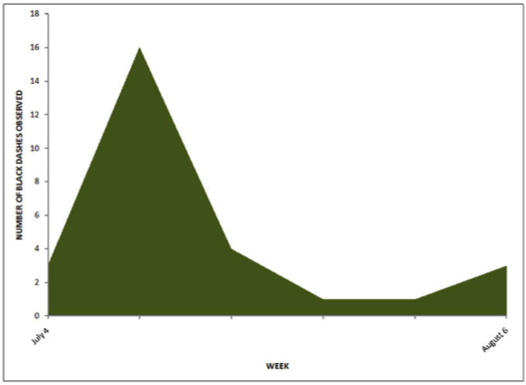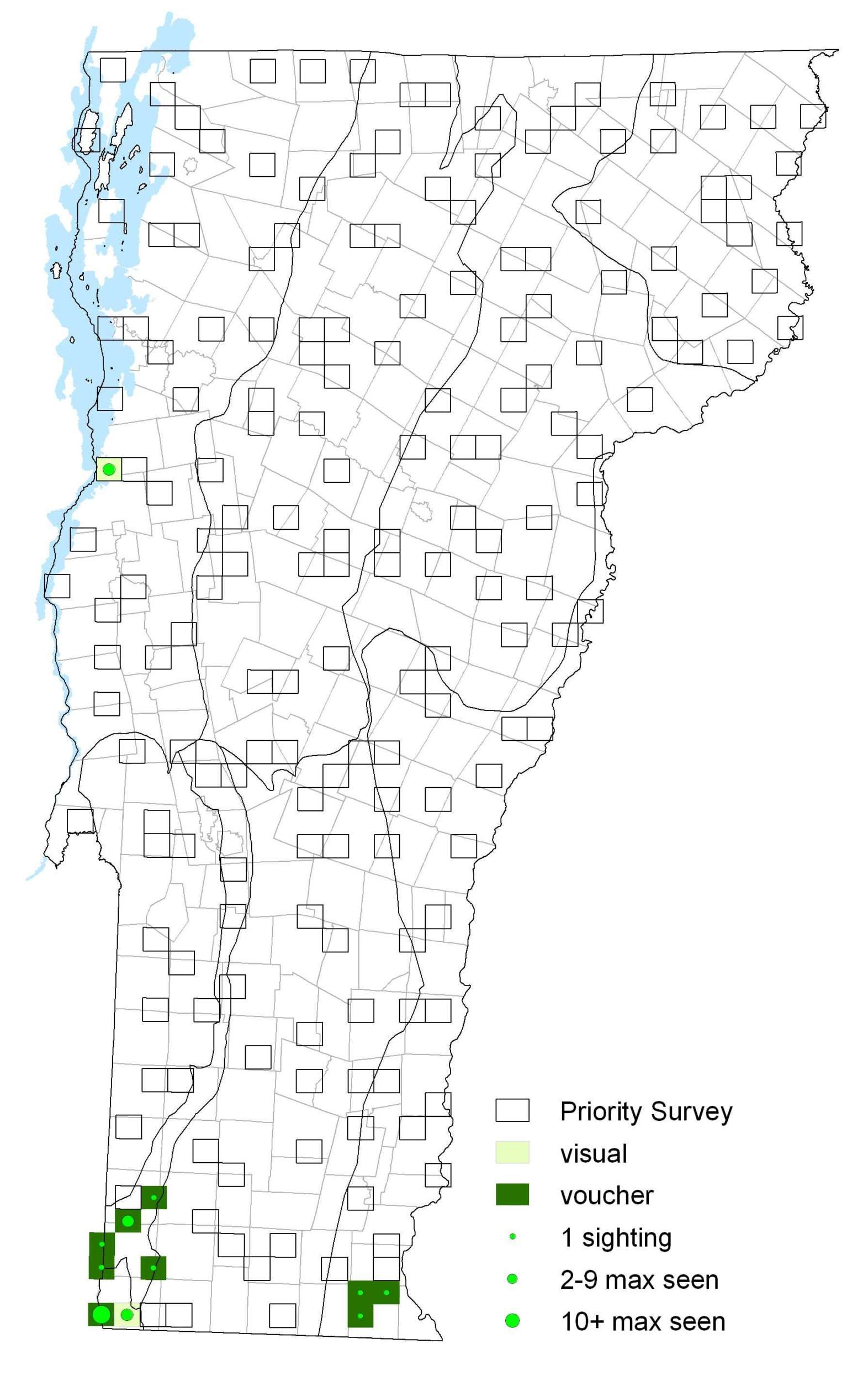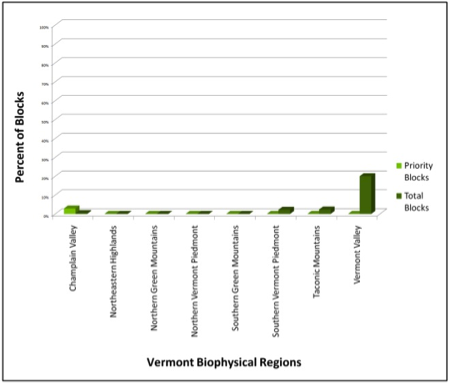|
Resident Conservation Status North American Range |
The Black Dash is often associated with another Hesperid, the Mullberry Wing. Though the two species are relatively easy to distinguish, they utilize similar habitats, host plants, and their ranges in the eastern United States match up almost exactly. In Vermont, however, the Black Dash is more confined to the southern part of the state than Mulberry Wing. First found in Vermont during VBS on 20 July 2003 in Guilford (A Grkovich).
Identification
A small Skipper, the male Black Dash has an overall warm, rusty brown appearance. Male forewing with a heavy stigma; female wings with some pale spots. Underside of hindwing is red-brown with a curved band of yellow spots that is thickest at its center.
Flight
One brood and flying from mid to late summer during VBS, with its peak flight occurring in early to mid July. Extreme dates: 4 July 2004 in Ferrisburg (J. Doyle) and 6 August 2004 in Brattleboro (K. Hemeon).
Distribution and Habitat
In Vermont, the Black Dash was found solely in southern sedge wetlands during VBS, except for one colony found in the Champlain Valley. Hostplants are narrow-leaved sedges, predominantly Tussock Sedge (Carex stricta), though others are possible. Adults rely on nectar from Buttonbush (Cephalanthus occidentalis), Jewelweed (Impatiens) and Swamp Thistle (Cirsium pumilum).







